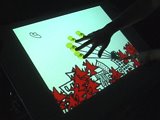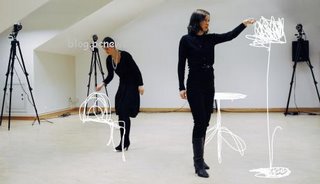
Ideas are bit like buses, you wait for ages then three come along at once. One idea that has been around for quite a while is computer odor recognition. This week I saw a computer being used to transmit a smell using a PC. You click on an image of a flower or whatever, and the smell is transmitted.
My first thought - naturally - is how could that be used in animation? One idea would be to link it to animated Greeting cards for birthdays, Christmas, and the like.
My second thought is how could it be abused by hackers. Well, they could spam you with nasty smells I suppose, but smells might also be the ultimate password. Check
http://ezinearticles.com/?Biometrics---Customer-Friendly-Computer-Security&id=106788
Another problem is that smells aren't easy to pin down. You can say something smells like a rose, but what does a meadow smell like after the rain? You need an image of a meadow, and sorting images out has been another problem waiting to be solved, and perhaps it now has; or so they say at
http://www.cbc.ca/technology/story/2006/11/02/tech-imagetag-061101.html
The Gadget Show is the show to see for all those gadgets that you cannot imagine anyone buying. This week an inflatable church big enough to hold sixty people (could be a cinema), and yet another attempt to make a 360 degree cinema screen so that you feel you are in the centre of the action.
Of course, Multi-screens have been around for very many years, but the main problem is having projectors both small enough to fit into the cinema, and synchronising them. Both problems now easily solvable; it only requires suitable stories to make use of them now.
Stan
My first thought - naturally - is how could that be used in animation? One idea would be to link it to animated Greeting cards for birthdays, Christmas, and the like.
My second thought is how could it be abused by hackers. Well, they could spam you with nasty smells I suppose, but smells might also be the ultimate password. Check
http://ezinearticles.com/?Biometrics---Customer-Friendly-Computer-Security&id=106788
Another problem is that smells aren't easy to pin down. You can say something smells like a rose, but what does a meadow smell like after the rain? You need an image of a meadow, and sorting images out has been another problem waiting to be solved, and perhaps it now has; or so they say at
http://www.cbc.ca/technology/story/2006/11/02/tech-imagetag-061101.html
The Gadget Show is the show to see for all those gadgets that you cannot imagine anyone buying. This week an inflatable church big enough to hold sixty people (could be a cinema), and yet another attempt to make a 360 degree cinema screen so that you feel you are in the centre of the action.
Of course, Multi-screens have been around for very many years, but the main problem is having projectors both small enough to fit into the cinema, and synchronising them. Both problems now easily solvable; it only requires suitable stories to make use of them now.
Stan


